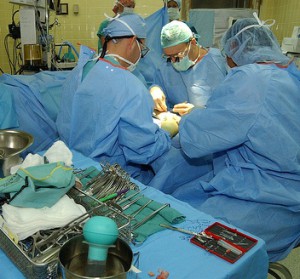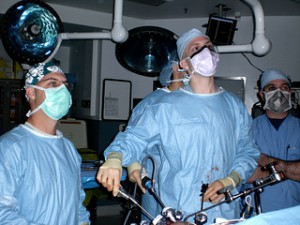
New section structure aims to better serve the surgical field.
At BMC Surgery, we recognise that change can be a good thing.
A few years ago, we made a major change to the way in which we handle manuscripts by appointing a group of academic Section Editors to drive the editorial assessment of new submissions according to the subject area of the study. Under this system, all manuscripts are assessed and managed through the peer-review process by expert academic Section Editors in consultation with a group of subject-specific Associate Editors. This allows for a detailed assessment of the science behind a manuscript early in the peer-review process, and means that expert reviewers can be identified quickly by professionals who themselves work in the field.
However, much has occurred in the intervening years, and we recognise that the sections that we originally organised the journal into may not now properly reflect the primary research that is going on in the field, or the types of submissions that we now receive in the journal.
For this reason, and in consultation with our Editorial Board, we have now revised the journal sections and recruited a number of new editorial board members to act as Section Editors.
The new-look sections of BMC Surgery are:
- Visceral and general surgery, edited by Dr Oliver Thomusch
- Vascular and thoracic surgery, edited by Dr Mustafa Cikirikcioglu
- Trauma care and orthopedic surgery, edited by Dr Mark Hammerberg
- Case reports
- Video articles, edited by Dr Maurits de Brauw.
Of the above, we are perhaps most excited about our new Video articles section. This section will consider well-described videos of new surgical procedures or techniques. Video articles related to new techniques, state of the art surgeries, new technology and devices, complications associated with endoscopic surgery and their treatment, recommendations to avoid difficulties, or to improve the procedure, new approaches and their anatomic details will be considered. Submissions should not exceed 10 minutes in duration, and should be accompanied by a full manuscript explaining the procedure or technique. We feel that the ability to show, as well as explain a technique, will significantly aid its understanding and therefore be of great utility to surgeons around the world. Please note that all Video article manuscripts should be submitted to this section under the article type “Case Report”.
Case Reports
 We are also very keen on our new Case Reports section, which will now handle all case reports submitted to the journal regardless of speciality (with the exception of video articles). We believe that, perhaps more than in any other field, case reports are of critical importance to surgeons. This is because of the myriad different ways that it is possible to perform any given technique, and the diversity of complications that can occur during surgery. We feel that these will be of great interest and utility to the field at large and as such should continue to be reported. Although we will still not be able to consider reports that advocate a novel therapeutic intervention, we are very interested in considering reports of cases where it was necessary to adapt a technique or where the surgical management was altered based upon clinical necessity.
We are also very keen on our new Case Reports section, which will now handle all case reports submitted to the journal regardless of speciality (with the exception of video articles). We believe that, perhaps more than in any other field, case reports are of critical importance to surgeons. This is because of the myriad different ways that it is possible to perform any given technique, and the diversity of complications that can occur during surgery. We feel that these will be of great interest and utility to the field at large and as such should continue to be reported. Although we will still not be able to consider reports that advocate a novel therapeutic intervention, we are very interested in considering reports of cases where it was necessary to adapt a technique or where the surgical management was altered based upon clinical necessity.
This is a very exciting time for BMC Surgery, and we hope that you share our enthusiasm for seeing where the journal can go from this point onwards. If you have any questions about BMC Surgery, or wish to discuss the possibility of publication with us, then our Executive Editor Tom Rowles would be happy to assist you.

Comments